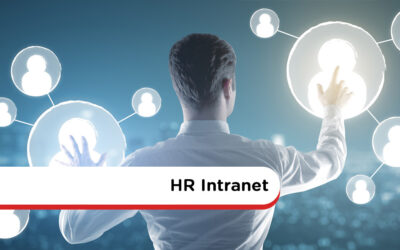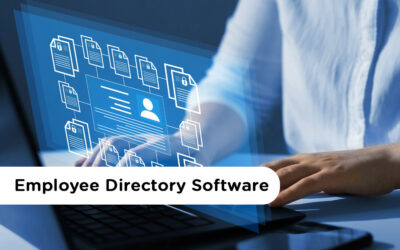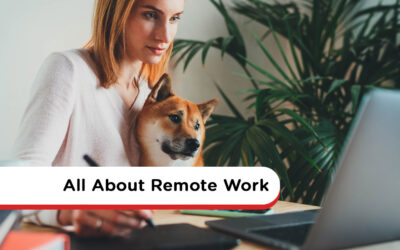Digital Workplace
Enable remote working for staff and let technology, people and processes unite
Share. Engage. Connect

Today’s always-connected, instant-access working environment has questioned the need for office-based working. Like never before, staff are connecting and collaborating with their peers in real-time, from any location.
As more staff transition to a work-from-home scenario, digital workplace technology offers a vital agile setting for businesses. Digital workplace technology can improve productivity, creative thinking, and team collaboration.
While some organizations have already embraced a digital workplace culture, others are being forced unexpectedly into managing staff remotely. The silver lining for the latter cohort is that if done right, remote working can facilitate a smarter, faster, better operation. Businesses stand to benefit from increased employee engagement and all-round improved business performance.
What is the Digital Workplace?

One of the most accepted definitions of the digital workplace is “the alignment of technology, employees and business processes to improve operational efficiency and meet organizational goals”.
Gartner describes it as a way of enabling new, more effective ways of working; raising employee engagement and agility; and exploiting consumer-oriented styles and technologies.
It’s been dubbed as the fourth industrial revolution, the digital transformation.
New digital workplace practices are being embedded into everyday life, across every size and type of business. Artificial intelligence, automation, and machine learning technology are taking over manufacturing, service work, and many other essential business tasks. And while most companies acknowledge the benefits of digital working, many admit to lacking the technical knowledge to lead the way (source: McKinsey & Company).
Distributed Working: The New Normal

The way in which we spark ideas and get work done has changed forever. With more employers supporting the distributed workforce model – either through choice or an unexpected crisis – the practical side of completing tasks and communicating with colleagues now, more-often-than-not, takes place in a digital space. Indeed, many economists forecast the physical office will soon be a thing of the past, accelerated by the recent Covid-19 pandemic.
A distributed workforce – also known as remote workers, digital nomads, telecommuters or home office workers – work from any location, across multiple devices. They value work/life balance, flexible hours – and critically, the need to feel connected. Digital workplace technology provides this essential connection – emphasizing the importance of friction-free, easy-to-use software.
If the physical office is no longer a place we go to work, these digital touchpoints play a vital role in how employees stay motivated, informed and engaged in what they do.
The onus will be on the employer to optimize the digital workplace experience for employees. Security, fast access, as well as intuitive and compatible software are just some of the important considerations when transitioning into a digital world.
Key Benefits Of A Digital Workplace Strategy
The advantages of adopting a digital workplace strategy spread wider than most businesses originally anticipate. Here are some of the expected and unexpected benefits:
Team Collaboration
Improved levels of problem-solving, interaction and knowledge-sharing – all-round improved collaboration
Flexible Remote Working
Allows employees to work from home, supporting more flexible working
Productivity Boost
Increased efficiency and employee productivity through improved communications
Innovation
Great ideas can come from anywhere – not just the boardroom – if staff have the right channels
Change Management
Clear, reliable communications minimizes confusion and garners internal support
Improved Transparency
Improved traceability and transparency amongst teams, reducing errors
Hidden Savings
Decreased employee commuting expenses and business real estate cost
Employee Experience
Improved personal experiences through greater inclusivity and integration of tasks
Retain Talent
Lower employer turnover rates due to improved work/life balance and engagement
The Digital Workplace Framework
Deloitte has developed a four-layer framework to help govern the design of a digital workplace. This is a useful guide for those businesses looking for workplace transformation. This framework comprises of:
1) Use – for staff to collaborate, communicate and connect
2) Technology – the digital tools to enable staff to do their job
3) Control – having the right governance structure and compliance controls in place to reduce risk
4) Business drivers – measuring the outcomes and actual business value.
It explains how to leverage your investment to support a new and better way of doing business that will enhance both the employee experience and the customer experience.
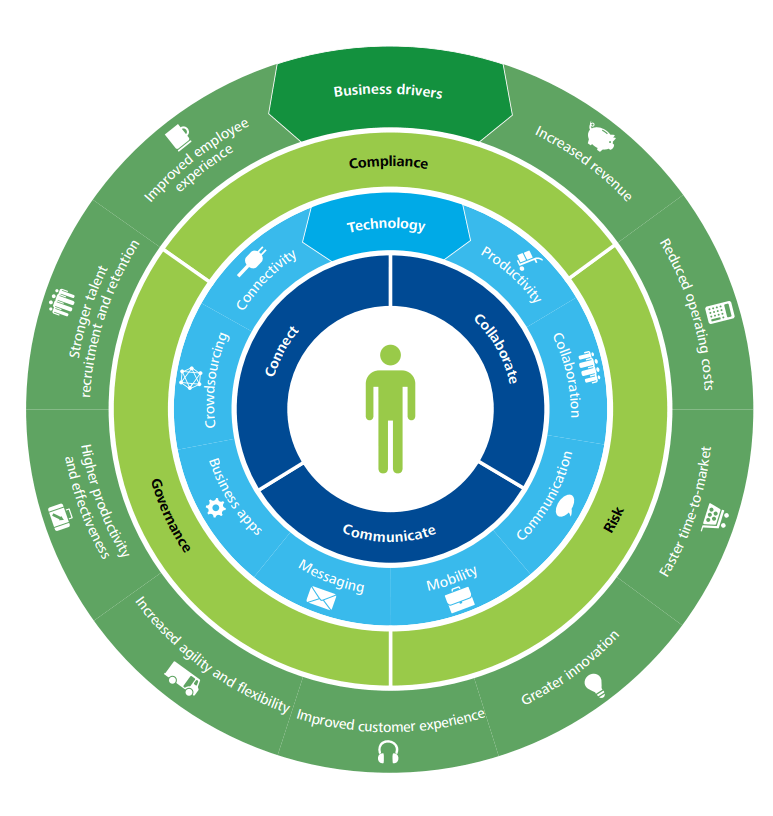
Tips For Deploying A Digital Workplace
Here are some practical tips to help you blend your existing applications with new technology to create the ultimate user experience and a high-performing work environment.
1. Involve the right people to steer the project. Senior ownership is vital, but including representatives who will drive the technology is also key.
2. Ensure alignment with business strategy. Keep your big picture always in mind i.e. ‘will this new tool and process-change enable us to achieve our goals?’
3. Consider internal culture. How amenable will staff be to new technology and digital experiences? Develop an internal communications program to explain the benefits of digital technology and how vital it is in today’s workplace. And most of all, make it easy for staff to do their job.
4. Deliver business value. Avoid falling for the ‘shiny new thing’. Stay true to the original outcomes your business needs.
5. Research technologies. A good case study, a free trial, a call with a current user – these are all helpful ways to shortlist new technologies. There are multiple service providers playing in a very dynamic, competitive digital market.
6. Consider risk, compliance and legal consequences. There are important regulations surrounding data management and security that must be adhered.
Digital Workplace: Future Trends
What are the anticipated trends at play when today’s graduates become tomorrow’s C-suite, artificial intelligence is mainstream, and the traditional office is no more?
Here’s our view of the future and the role of the digital workplace:
Cloud-based Solutions
Effective, cloud services with unlimited access will be essential to support remote working
No Standing Still
Technology will continue to evolve, either organically or intentionally. Status quo is not an option
All-On Automation
Traditional ways of working will continue to be disrupted; automated processes will increase
Tech Choice Matters
Technology stack choices will become more important when attracting staff and tech compatibility
Staff Expectations
Young workers have a huge appetite for social tools and tech, increasing pressure for employers to invest
Customer Self-Service
Customers will want to search and solve their own questions independently, without speaking with an agent
Overwhelming Options
Choice-explosion of SaaS products could be overwhelming; apps may fail to work together
Employee Experience
Employers will try harder to motivate, engage, inspire and involve staff to retain talent
Tech Maze
Employees become ‘trapped in the tech maze’ with many apps overlapping and staff feeling bamboozled
❝
The Digital Workplace is a work in progress, an ongoing journey, with only 14% of companies believing they are at a ‘mature phase’.
Source: Digital Workplace Group
Digital Workplace Software
Core to the successful adoption of a digital attitude is finding ways to support staff as they navigate through the tech maze of the modern digital workplace, along with adjusting to working from home. While there are countless business apps and platforms suited to their specific areas of business, a central hub – or gateway if you like – where staff can access everything they need to complete their job is vital.
MyHub intranet software provides that central digital space for staff to communicate, share and source company information, regardless of their location. Our cloud-hosted, single access point makes life easier for staff, helping them do their job better.
From instant messaging to the seamless integration of business applications, workflow automation to access-controlled content libraries, MyHub brings together all this into a beautifully-sleek, easy-to-navigate digital workplace. All accessible with a single sign-on.
Digital Workplace Tools: The MyHub Difference
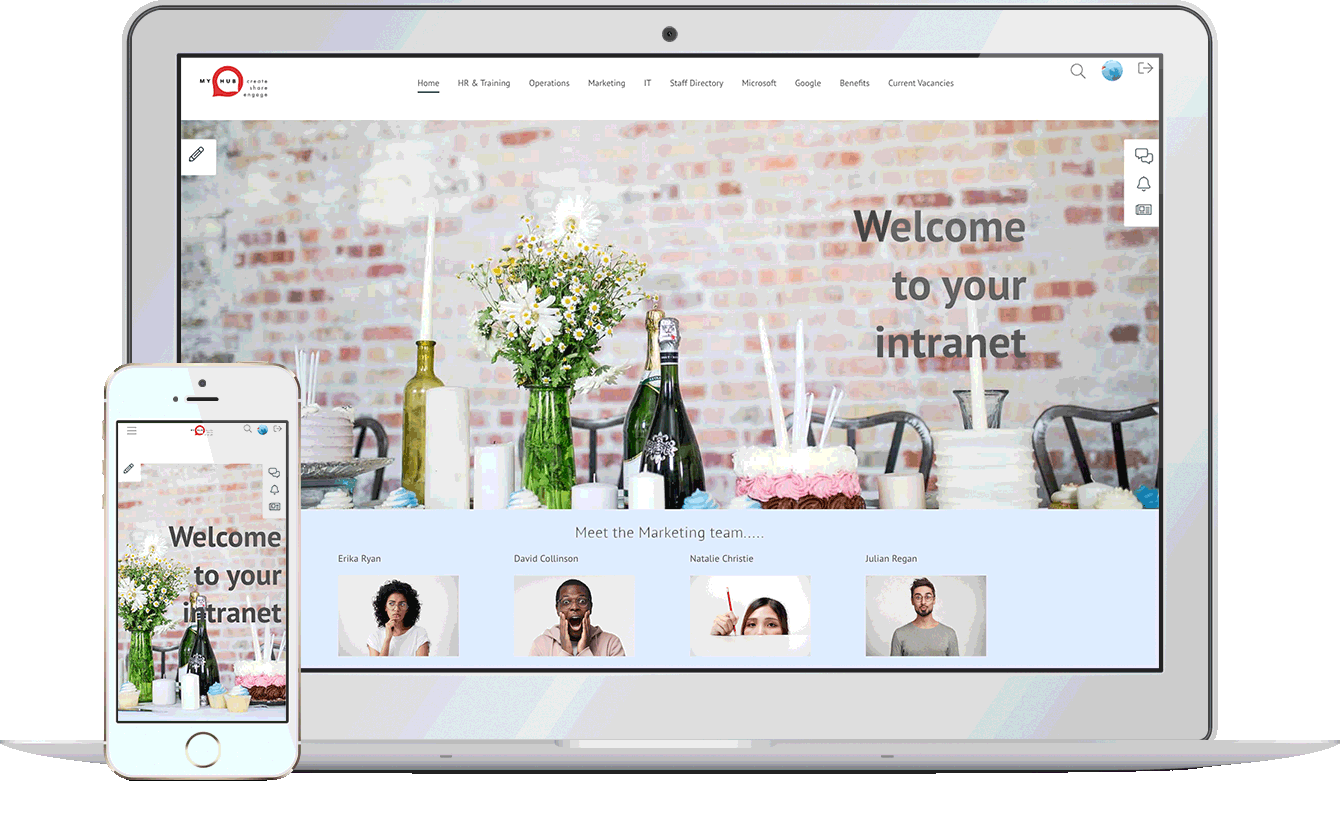
Considered the central hub of your digital workplace solution, MyHub is fully scalable, designed to support your company’s growth. And fully customizable, to meet your exact needs.
Designed with the non-technical buyer in mind, MyHub requires no coding skills or IT experience. It is simple to set-up – and fun to use!
Using simple drag-and-drop functionality, you can create a professional digital workspace in minutes! Being cloud-hosted also means you’re future-proofing your investment: you get to benefit from our latest new features and enhancements as soon as they’re released.
Let our technology unleash a smarter and super-efficient digital workplace solution that your staff will love.
❝
Managers have reduced the time spent on management activities by one to three hours due to system integration and collaboration tools
Useful Digital Workplace Resources
HR Intranet Portal: 10 Compelling Benefits For Human Resources
An HR intranet portal is a centralized digital workspace that places HR policies, forms, training, and news at employees’ fingertips—24/7, across any device. It’s built to empower staff with self-service options and reduce repetitive administrative tasks for HR teams, improving efficiency and accessibility for both in-office and remote workers
The platform’s strength lies in streamlined processes like leave management, appraisals, recruitment, and onboarding, all supported by automated routing and powerful search. This not only saves time but also ensures consistency and compliance in documentation. Rich two-way communication tools—such as blogs, forums, instant messaging, and surveys—cultivate a connected, inclusive culture regardless of where teams are based
Engagement is further boosted through social features, recognition tools, directories, and wellness resources. HR portals help build relationships, reinforce employer branding, and track engagement metrics through quizzes, feedback, and exit surveys. Plus, they eliminate login fatigue by integrating third-party apps (like Microsoft 365, Salesforce) via single sign-on under one digital roof .
Employee Directory Software: The Intranet Solution
The blog highlights that while standalone employee directory tools are prevalent, an intranet solution—like MyHub—offers a superior, all-in-one experience. Beyond basic contact lists, an integrated directory features rich profiles, photos, biographies, expertise tags, and project highlights. This makes discovering and connecting with colleagues intuitive and engaging.
A modern integrated directory fosters better working relationships and employee engagement by breaking down organizational silos. Customizable profiles empower employees to showcase skills and contributions, making interdepartmental collaboration smoother. It also humanizes teams, easing onboarding and reducing communication friction—no more forgotten names or awkward intros.
Additionally, network-enabled directories help reinforce company culture. They give employees a sense of identity and belonging by illustrating how each individual fits into the larger mission. Easy-to-use features—such as self-updating profiles and straightforward search—ensure adoption remains high, keeping the directory current and relevant.
All About Remote Work: Definition, Benefits, Statistics
Remote work, defined as performing job duties from anywhere—home, café, or coworking space—has surged since the pandemic halted traditional office routines. From 2018 to 2021, full‑time remote workers more than quadrupled, and now hybrid and fully remote setups are the new norm. This trend reflects flexible work styles reshaping how teams operate.
Employees benefit from reduced commutes, lower stress, and greater autonomy, often reporting better work‑life balance, savings of ~$6,000/year, and renewed job satisfaction. Organizations gain cost savings—up to $22,000 per remote worker—and experience productivity boosts (up to +29%), improved retention, and access to a global talent pool. Environmentally, remote work cuts commuting emissions, supports sustainability goals, and reduces office energy use.
To succeed, both employees and leaders need the right tools (cloud storage, video conferencing, collaboration platforms), structured routines, and a dedicated workspace. Awareness of challenges—like communication gaps, motivation dips, mental health concerns, and technology hurdles—is crucial. Hybrid models (fixed, flexible, office‑first, remote‑first) offer balanced solutions, and expert opinions from Microsoft, Google, Meta, and CBRE signal that flexible work arrangements are here to stay.
Examples Of A Bad Leader: 10 Lousy Traits To Watch Out For
Bad leaders exhibit behaviors that severely impact team morale, productivity, and retention. Common examples include micromanagement, taking credit for others, inconsistent expectations, and authoritarian control. These traits signal mistrust, erode motivation, and stunt both individual and team growth .
Poor communication often accompanies bad leadership. This includes failing to listen, offering unclear instructions, shifting goals unpredictably, and ignoring staff feedback. Combined with a lack of empathy, dishonesty, and favoritism, such behaviors breed confusion, distrust, and resentment within teams .
Worse leadership styles—like toxic or authoritarian leadership—push employees into compliance through intimidation, unpredictability, or self-serving decisions. These styles suppress innovation, increase turnover, and risk long-term reputational damage. The article underscores the importance of accountability, empathy, transparency, and adaptability to reverse these effects and foster positive leadership cultures .
Employee Morale: The Ultimate Definition
Employee morale reflects the overall attitude, satisfaction, and outlook of your workforce—it’s the vibe people sense when walking into the office. High morale means employees are engaged, motivated, and aligned with company goals; low morale manifests in absenteeism, conflict, and burnout.
This guide explains why morale matters: it directly influences retention, performance, productivity, wellbeing, teamwork, and communication . Metrics such as turnover, absenteeism, performance dips, and staff feedback help identify morale issues early.
To counter poor morale, the blog offers ten practical tips: recognize achievements, support career growth, invest in wellbeing, enhance leadership communication, and foster two-way engagement . These steps—when combined—create a healthier, more productive workplace culture.
Business Casual Dress Code For Workplaces
Business casual blends traditional office attire with a relaxed touch—think slacks, button-downs, blouses, chinos, knee-length skirts, and closed-toe shoes—but always polished and appropriate for your workplace. The guide highlights that the exact definition varies by industry, company culture, and format—what’s suitable in a startup may differ markedly from expectations in a law firm .
For men, staples include button-down shirts, fine knit sweaters, slacks or chinos, optional blazers, and polished closed-toe shoes . Women can choose from smart sweaters, blouses, structured dresses or skirts, tailored trousers, and modest heels or flats . The blog also addresses adaptable remote-work attire, emphasizing at least being presentable from the waist up for video calls .
It provides a handy cheat sheet of do’s and don’ts: no hoodies, crop tops, athletic wear, or flip-flops; avoid overly tight, baggy, or wrinkled clothes . When in doubt, err on the side of slightly overdressing, observe leadership, and adapt to seasonal changes while maintaining professionalism.

